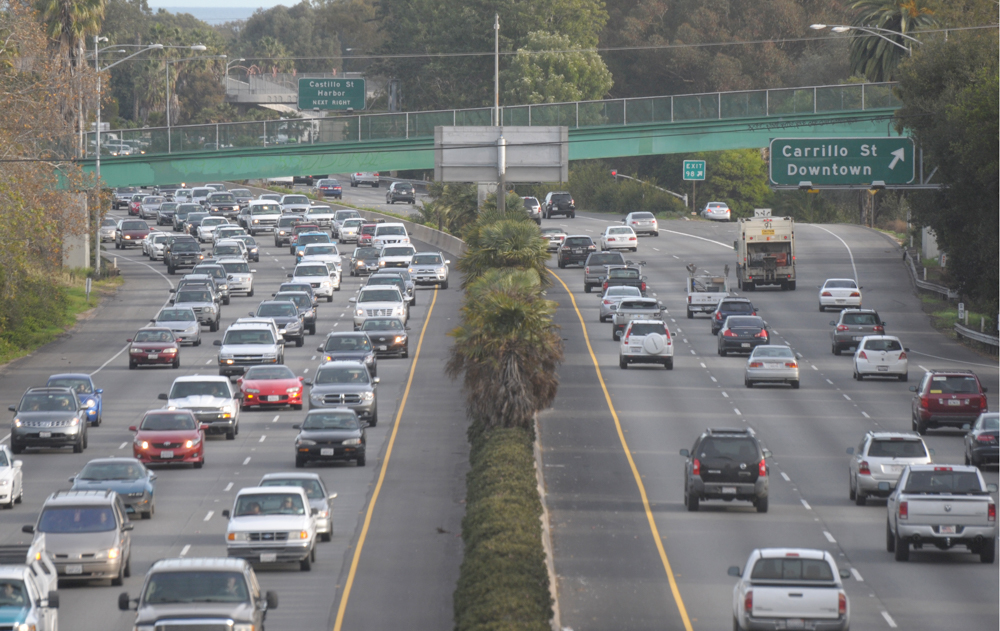Inextricable Priorities
After Housing, How Do You Get to Work?

Governor Gavin Newsom has set the goal for encouraging the construction of 3.5 million new housing units in California by 2025. However, a critical element will determine the initiative’s potential for success: transportation. Successfully addressing housing critically depends on the accompanying advances we make in transportation.
In Southern California, historically, new housing was added via sprawl — single-family housing replaced open space, with new houses added at points farther and farther away. It was relatively easy and inexpensive to create new housing. But as the nearby open space disappeared, creating new housing has become more difficult, and the rate of housing creation has fallen.
Southern California’s transportation system was built to accommodate single-family housing. In contrast, cities like New York are built around the subway and light rail, enabling dense housing within the city and allowing large numbers of people to live away from the city and to commute.
In Los Angeles and Orange counties, the traffic design was not originally built to accommodate areas of dense housing such as apartment buildings and other multifamily housing. There are limits to how many lanes the county can add to roads. Moreover, as L.A. County continued to grow out, certain major arterial roads (like the 405, the 110, and 10) received more and more traffic from the expanded city. As a result, traffic congestion has become nightmarish: L.A. drivers, on average, spent over 102 hours in traffic at peak times in 2017, the most time in rush-hour jams of any city in the world.
One way for the Los Angeles region to start to solve its horrendous traffic and housing problems is through high-speed-rail projects to nearby cities. According to Trulia, the median housing prices in Lancaster are $290,000 for a median home and $286,000 in San Bernardino. High-speed-rail projects, like a maglev (“magnetic levitation”) train, could allow people to commute from these cities to downtown L.A., where housing costs are much higher. Further developing the public mass transit options can get more cars off the road, reducing greenhouse gases and congestion on the roads.
Santa Barbara County has a different problem affecting housing but one that is also tied to transportation. One of the characteristics for the California Central Coast is that an ocean and a mountain range constrain housing options; they must run up and down along the coast. The traditional hub-and-spoke model of a city core and surrounding suburbs isn’t available.
For coastal cities, the sprawl development model implies building in the agricultural greenbelt around cities — extending additional housing into the agricultural foothills and up the sides of the mountain ranges. It is both highly unpopular (communities often define themselves by their agricultural heritage, for example, Goleta as the Good Land) and seems to represent a risky strategy, given the mudslides and fires in Santa Barbara and Ventura counties. Moreover, water is a scarce resource, so it is hard to justify adding housing to areas where there are not adequate existing water supplies to provide for the existing housing.
Commuting to nearby cities with more abundant housing might seem to be one alternative. According to Trulia, median housing costs for Santa Maria and Lompoc are $388,000 and $350,000, respectively. In contrast, the cost of a home in Santa Barbara is $1,105,000 and $779,500 in Goleta. However, commuting is a challenge. No commuter trains or light rail run along the coast. People who work in Santa Barbara and want to live in Santa Maria or Lompoc, with their cheaper housing, have no choice but to take the 101.
If there were an easier commute between the northern and southern cities, building on a commuter light-rail line, more people would opt for commuting between the different cities. For example, by Glendale, on the 134, L.A. County has put a train in the center median between the north and southbound lanes. Is something like that possible for the 101? Is an elevated train above the Southern Pacific line possible? Are there other routes available?
New Cuyama lies on the other side of the Sierra Madre Mountains from Santa Barbara. Median house costs in New Cuyama are $156,500, or almost $1 million less than the costs of a home in Santa Barbara. If the state built a tunnel, like those the Boring Company has started to create in different cities, that offered access between New Cuyama and Santa Barbara, workers would reduce their ridiculous housing costs, and businesses could find available workers more easily. In addition, Santa Barbara would gain an additional access point in cases of emergency, whereas now the 101 is the only point of egress or entry.
The High-Speed Rail project, recently proposed for reduction (Gov. Newsom) or termination (President Trump) would connect Anaheim and Los Angeles to San Francisco via the Central Valley in 2 hours and 40 minutes. The problem with the proposed train is that its purpose is so limited. It would replace the use of airlines for long-distance trips, but it would contribute nothing to alleviating our pressing traffic and congestion concerns, nor expand housing availability.
In short, California has a transportation crisis as much as it has a housing crisis, and the two cannot be separated. We need policies that consider them concurrently.



